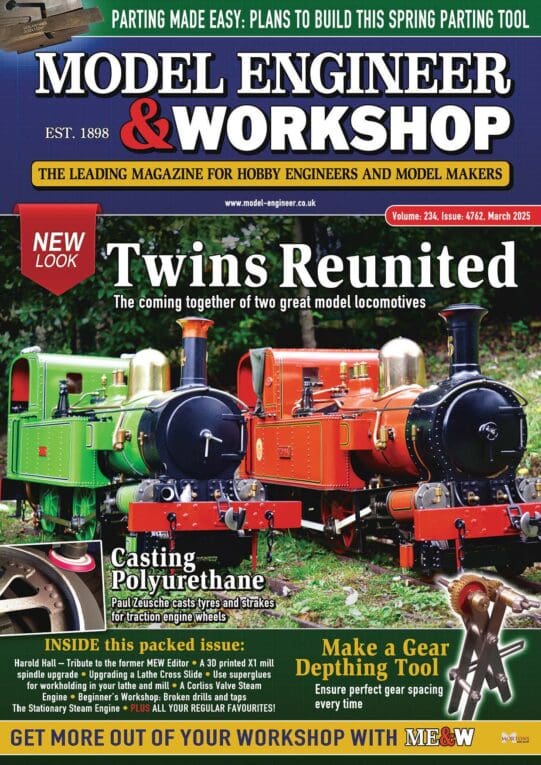Assuming that rigidity problems can be sorted out I would like some guidance on the selection of lathe speeds on the Myford..
..other things being equal is it correct to say that a 3” diameter slitting saw would impose less of a stress on the set up than a 4” saw?
(for BMS) ..somewhere between 100 & 200rpm for a 3″, and 70 & 150 rpm for a 4″ – start at the slower end and see how it feels; everything from saw ‘newness’ to the quality of the material you are cutting seems to have a bearing when it comes to slitting and I find it a business where sensitivity on the part of the operator definitely plays some part in a happy outcome. Do try and keep it cutting positively, and don’t whatever you do, put CT90 anywhere near it – it’s much too sticky for this job.
The query about cutter diameter is interesting.
My own take and feeling is that cutter Dia. doesn’t make much difference at the workface, because here it is chip load that makes itself felt and all other things being equal you probably want this to be about the same regardless of cutter diameter.
The loading at the cutter mounting / arbor & spindle do feel the difference in cutter diameter, but in my experience the commonest issues are saw slippage or ‘stalling’ – the first mitigated by attentiveness when mounting and the second probably not very likely on a ‘7’ in backgear, unless you are seriously overdoing it.
In general (with thin blades), I find it best to select the smallest blade that will clear the work – just because they are stiffer – but with a ‘table’ set up such as yours I might be less certain.
I’d be interested to know whether other users think there’s any advantage to using the ‘front quarter’ of the blade to get fewer teeth taking a more direct path through the material, vs. the rather ‘tangential’ cut that you have running the material at the very top of the blade..?
When cutting thinner material I generally try to run the saw in about ‘three-quarters of the way out’
Howard Lewis.










